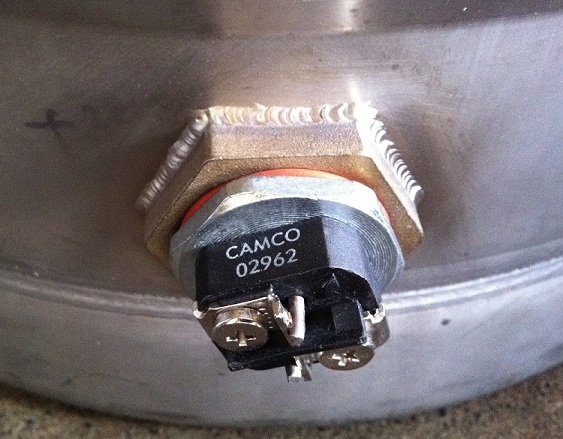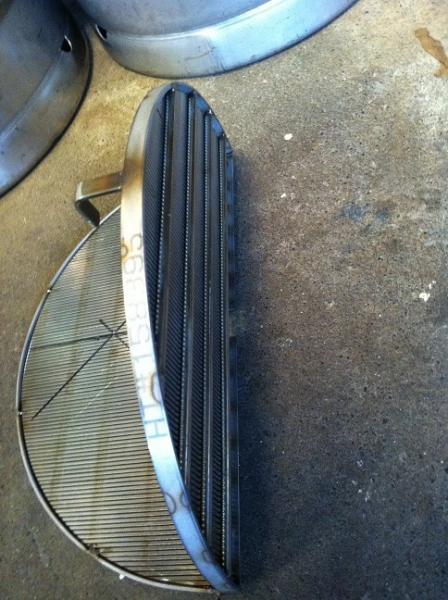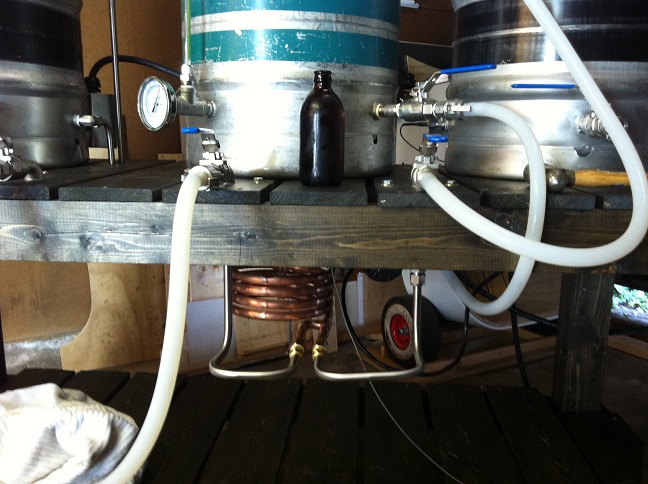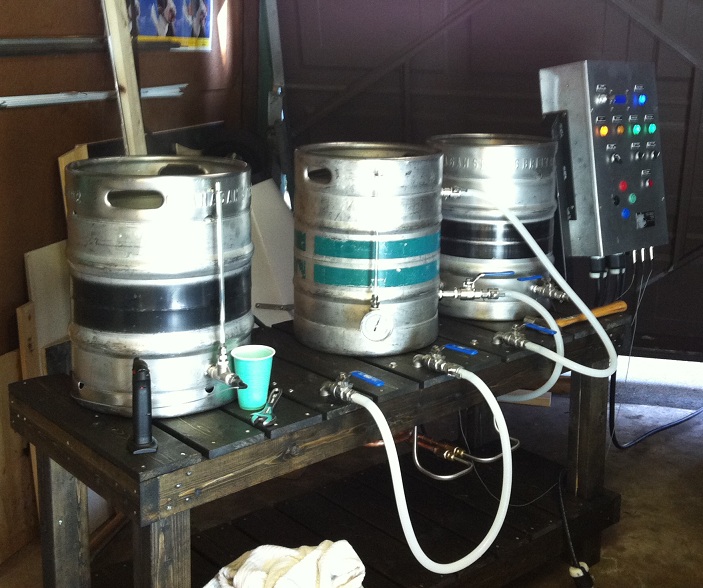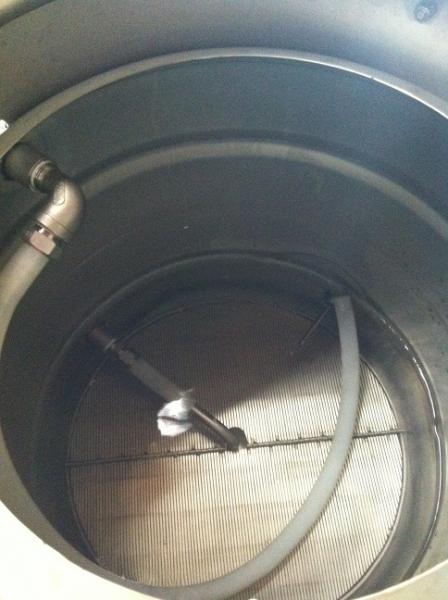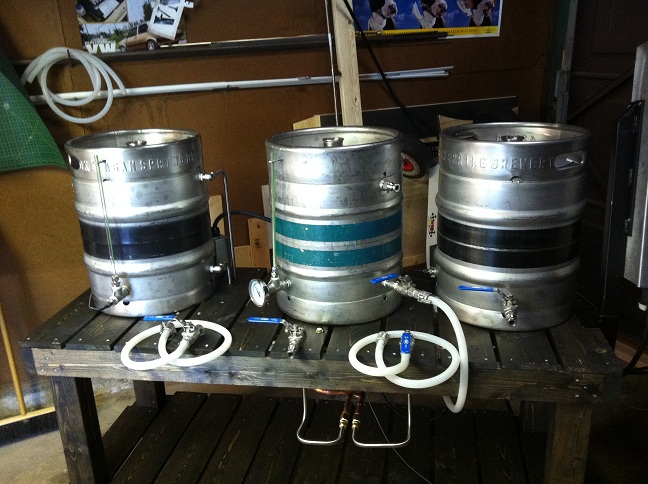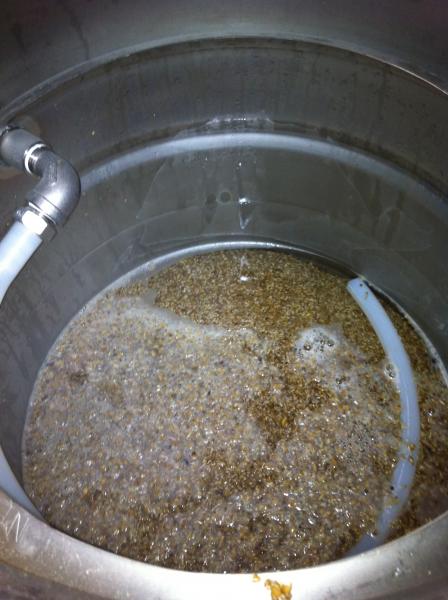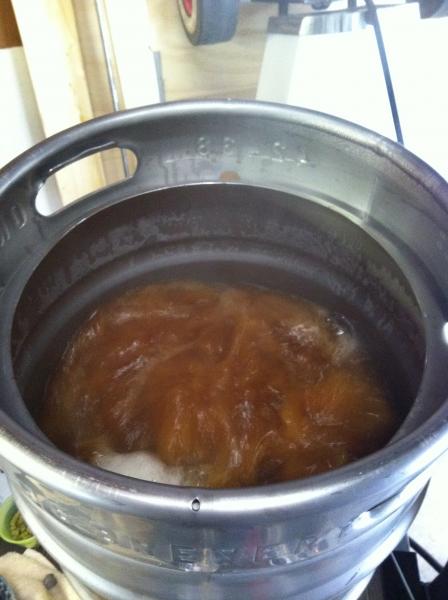RussH
Well-Known Member
I started planning / building a home brewery about a year ago. The concept was simple enough, I wanted a brewery that would allow me to make a 5-10 gallon batch of beer in my garage, with good repeatability. After a lot of research, I decided to go with electric elements, since they met my criteria, and would allow for a bit more flexibility in the future.
For temp control, I was tempted to go with one of the off the shelf PID controllers out there, however, I had a microcontroller development platform (Parallax BOE) that I purchased when I was in school, in a box in the garage and I though "this would be a great time to put that thing to use". The temperature monitoring is done using 3 LM34 transducers, and a MCP3204 ADC. The temperature control is done using 2x 240V - 40A SSR's that power The immersion elements. There are a few push buttons and an LCD display with a menu system for selecting the operating mode and adjusting setpoints / duty cycles. The Parallax board, temperature sensors, and LCD, get their power through a Lambda 9V supply that is connected to the main power.
When the unit is powered up, a menu is presented on the display. The modes available are: Mash - Boil - Chill. When a mode is selected, an initial screen displays the user entered parameter, along with a pre programmed value. At this point, the increment / decrement buttons will change the value, and upon pressing enter, the controller begins trying to reach the desired temperature. The display shows the set point, the actual temperature, and the duty cycle that it's running at. During operation in this mode, pressing escape will take you back to the initial setting screen so you can adjust the setting, and pressing escape one more time will take you back to the main menu so you can change modes. The Chill mode simply displays one of the temperature readings in big number mode on the 4x20 display. During this stage the temperature being monitored is the outlet of a heat exchanger that I am using to chill the wort.
All of the vessels are made from 50l kegs. I used a friends plasma cutter to take the tops out, and had another friend weld in the fittings for me. I considered weldless, but said friend happily works for beer, and I have a thing for pretty little TIG welds. The HLT and Kettle have 5500W 240V elements for heating. I got a few scraps of wedge wire from a local micro brewery, and made them into a very nice false bottom. I am using the HopStopper in the kettle as an outlet screen.
The brewery is plumbed to make use of the counter flow heat exchanger for both heating and cooling the wort. The HE is used for heating during the mash portion of the brew. During heating, water from the HLT is pumped through the outside of the HE, returning to the top of the HLT. While this is happening, wort is pumped through the inside coil of the HE and returning to the top of the Mash Tun. The circulation of water from and to the HLT will be enough agitation to eliminate stratification of the HLT. Recirculating the wort through the HE causes the grain bed to act as a filter, and catch most of the husks and fine material that washes through the false bottom. During cooling, the wort is pumped through the inside of the HE, and into the fermenter. Tap water runs through the outer pipe, and on exit is dumped into the HLT to be used as clean up water. Connections to the HLT are hard piped, as they never need to change, and the only thing in the HLT will be clean water.
The heat exchanger is made up of an outer shell of 1/2" copper pipe (5/8" O.D. - 0.527" I.D.) and an inner tube of 3/8" copper tube (3/8" O.D. - 0.311" I.D.). The coil is 10' long in total. The calculations I have done show that with 55 degree tap water, and 210 degree wort, flowing 6 gallons of each through the exchanger over 10 minutes should result in wort at 67 degrees and water at 195 degrees. I am interested to see how the real thing works out. I may need to flow more cooling water, and run the wort through a bit slower, which is not a problem - it just gives more washing up water. If the ground water is too warm, I am able to fill the HLT with water and ice, and using the same plumbing route as during the mash, circulate ice water through the shell side of the exchanger.
I am using 2 Chugger S/S pumps to circulate the wort / water. They have been working very well during testing.
I finished the build last weekend, and have been messing with the microcontroller and temperature control regime since. I haven't brewed yet, but I have run through the process a few times using just water. I still have some bugs to sort out, but at this point, brewing is doable. I'm sure I've missed some things in this whirlwind description, but between this and the pictures, I'm sure it gets the point across.

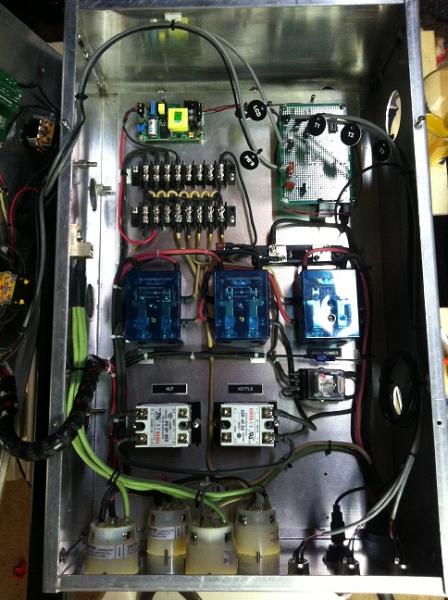

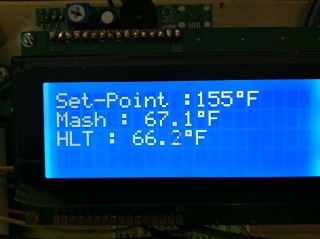
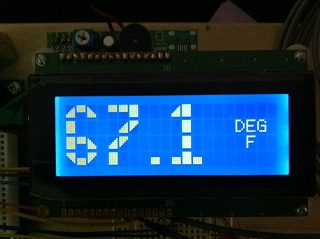
For temp control, I was tempted to go with one of the off the shelf PID controllers out there, however, I had a microcontroller development platform (Parallax BOE) that I purchased when I was in school, in a box in the garage and I though "this would be a great time to put that thing to use". The temperature monitoring is done using 3 LM34 transducers, and a MCP3204 ADC. The temperature control is done using 2x 240V - 40A SSR's that power The immersion elements. There are a few push buttons and an LCD display with a menu system for selecting the operating mode and adjusting setpoints / duty cycles. The Parallax board, temperature sensors, and LCD, get their power through a Lambda 9V supply that is connected to the main power.
When the unit is powered up, a menu is presented on the display. The modes available are: Mash - Boil - Chill. When a mode is selected, an initial screen displays the user entered parameter, along with a pre programmed value. At this point, the increment / decrement buttons will change the value, and upon pressing enter, the controller begins trying to reach the desired temperature. The display shows the set point, the actual temperature, and the duty cycle that it's running at. During operation in this mode, pressing escape will take you back to the initial setting screen so you can adjust the setting, and pressing escape one more time will take you back to the main menu so you can change modes. The Chill mode simply displays one of the temperature readings in big number mode on the 4x20 display. During this stage the temperature being monitored is the outlet of a heat exchanger that I am using to chill the wort.
All of the vessels are made from 50l kegs. I used a friends plasma cutter to take the tops out, and had another friend weld in the fittings for me. I considered weldless, but said friend happily works for beer, and I have a thing for pretty little TIG welds. The HLT and Kettle have 5500W 240V elements for heating. I got a few scraps of wedge wire from a local micro brewery, and made them into a very nice false bottom. I am using the HopStopper in the kettle as an outlet screen.
The brewery is plumbed to make use of the counter flow heat exchanger for both heating and cooling the wort. The HE is used for heating during the mash portion of the brew. During heating, water from the HLT is pumped through the outside of the HE, returning to the top of the HLT. While this is happening, wort is pumped through the inside coil of the HE and returning to the top of the Mash Tun. The circulation of water from and to the HLT will be enough agitation to eliminate stratification of the HLT. Recirculating the wort through the HE causes the grain bed to act as a filter, and catch most of the husks and fine material that washes through the false bottom. During cooling, the wort is pumped through the inside of the HE, and into the fermenter. Tap water runs through the outer pipe, and on exit is dumped into the HLT to be used as clean up water. Connections to the HLT are hard piped, as they never need to change, and the only thing in the HLT will be clean water.
The heat exchanger is made up of an outer shell of 1/2" copper pipe (5/8" O.D. - 0.527" I.D.) and an inner tube of 3/8" copper tube (3/8" O.D. - 0.311" I.D.). The coil is 10' long in total. The calculations I have done show that with 55 degree tap water, and 210 degree wort, flowing 6 gallons of each through the exchanger over 10 minutes should result in wort at 67 degrees and water at 195 degrees. I am interested to see how the real thing works out. I may need to flow more cooling water, and run the wort through a bit slower, which is not a problem - it just gives more washing up water. If the ground water is too warm, I am able to fill the HLT with water and ice, and using the same plumbing route as during the mash, circulate ice water through the shell side of the exchanger.
I am using 2 Chugger S/S pumps to circulate the wort / water. They have been working very well during testing.
I finished the build last weekend, and have been messing with the microcontroller and temperature control regime since. I haven't brewed yet, but I have run through the process a few times using just water. I still have some bugs to sort out, but at this point, brewing is doable. I'm sure I've missed some things in this whirlwind description, but between this and the pictures, I'm sure it gets the point across.







